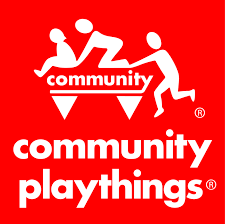The Expressive Art of Caring
Masks can't hide emotional intelligence and our drive to connect
| January 2021Last summer after stay at home orders were lifted, I returned to my usual routine of Saturday morning grocery shopping. Putting on a mask for the first time, I felt grief and disbelief as I walked towards the store. It was so strange to muzzle my mouth and my smile.
Then a surprising thing happened. As I stepped up to the check-out line I saw my favorite checker, David, whom I hadn’t seen in months. In all my years of shopping at Hannaford’s, we had never talked beyond shallow pleasantries, but now we found ourselves chatting like old friends. The masks didn’t shield our interaction, rather it forced us to connect with conversation, and by what felt like our hearts, in the joy of seeing one another. While my groceries rolled by me on the conveyor belt, I learned that David has five siblings and a big family of nieces and nephews, he is saving money to buy a new laptop, and he is planning to go back to college next year to study design. As I pushed my cart through the parking lot, I pulled my mask down for a breath of fresh air and instantly knew I would be okay. I felt connected. I knew we would find a way to teach and care even with masks on.
As we prepared to reopen our center, we spent a good deal of time talking, and worrying, about the effects of mask wearing on young children. In the New York State preschool program I lead, all adults are currently required to wear masks, at all times. We’ve experimented with clear masks and face shields and at times these alternatives are especially helpful (such as during story time when we really want the children to see our expressions) but mostly, given that we are working at least eight hours a day, we have just adapted in a matter-of-fact-way to putting on a mask to go to work. We seek the most comfortable mask we can find, give each other masks breaks, and change our masks a couple of times during the day to freshen up.
What's amazing is how well the children have adapted. Not only have they accepted that this is how their teachers look now, but they are teaching us about their own innate social-emotional intelligence. My friend Shelley, who is also teaching preschool with a mask on, said that in the fall when she met her children, she talked to them about reading her eyes. She played a game on the playground where, standing at a distance, she had the children guess how she was feeling by looking at her eyes and noticing her body language. She then lifted her masks to reveal her funny exaggerated emotion—happy, surprised, or sad—and the kids laughed and said, “Yep— we knew your face would look like that!” She explained that kids seem to tune into her and check in to see her emotional state now more than she had previously realized.
Children are always watching our eyes—our gaze holds incredible power to convey care and love and respect. Children also tune into our tone of voice, our gestures, our body language, or our stance. These are all the subtle ways we communicate with children and with one another. Wearing a mask forces us to strengthen our expressive art of caring.
Wearing a mask these last months, I started thinking about care as being the first literacy of life. It is through our touch and our gaze during care rituals—feeding, rocking, holding, dressing—through the first human caring exchange, that our children learn to listen to our unspoken messages and connect. This is the language of care. I believe this language is not only conveyed through what is seen, through the gaze; and what is felt; through the body; but also through what is sensed, through the heart.
Howard Gardener teaches us about children’s inter- and intra-personal intelligences. He describes how children have heightened abilities to sense and intuit their way through social interactions and how they hold awareness of self and other. Children have an acute awareness of the feelings and motives of others, as well as a deep inner life. Howard Gardener even went on to describe another kind of intelligence—one he calls existential intelligence which involves the child’s ability to go beyond what is seen and heard.
Yes, we know what he is talking about because when we care for young children, we go beyond what is seen and heard. We experience this existential intelligence regularly. As I marvel at the children, I ask not how we as humans learn empathy, awareness, and connection but how is it that we lose these things as we become adults?










